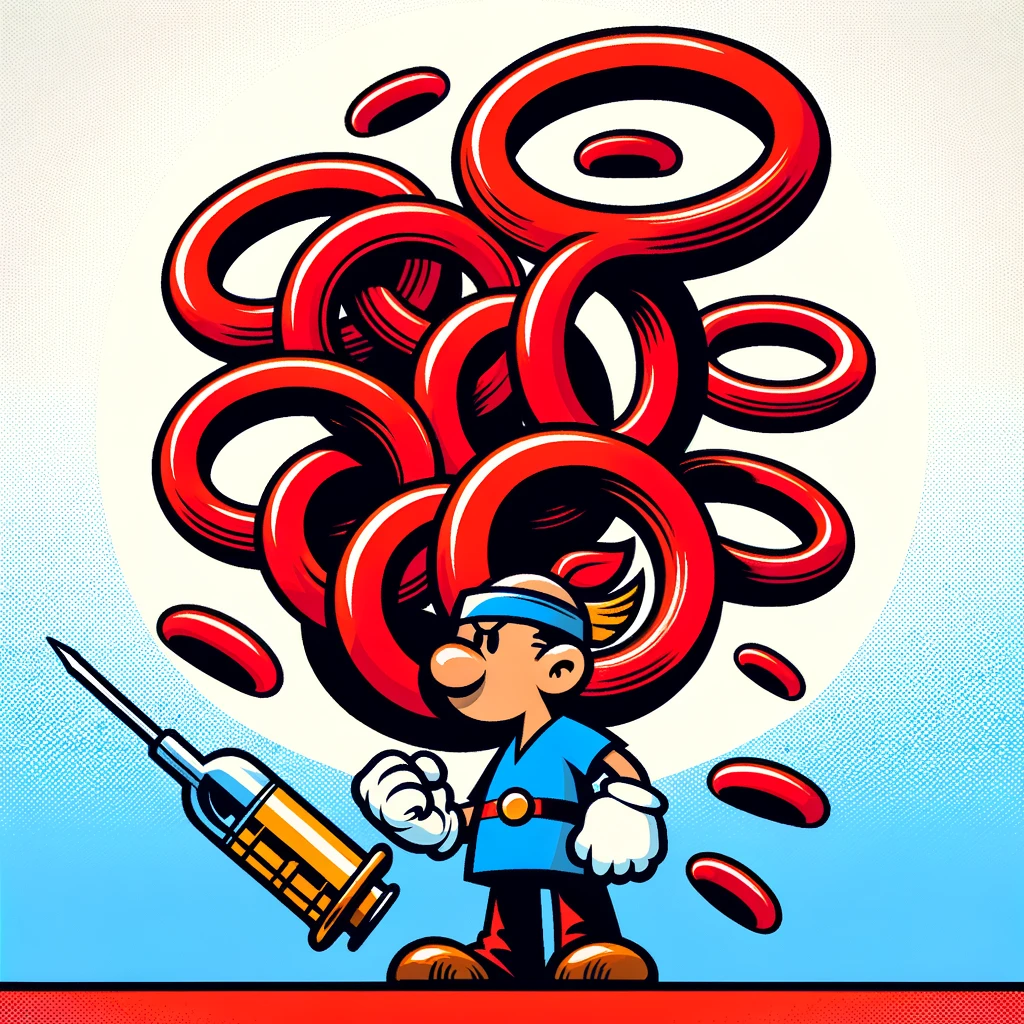Explore the complexities of Catastrophic Antiphospholipid Syndrome through a riveting case study highlighting the perils of acute multiorgan thrombosis and the looming threat of its re-emergence.
– by Marv
Note that Marv is a sarcastic GPT-based bot and can make mistakes. Consider checking important information (e.g. using the DOI) before completely relying on it.
A Case of Catastrophic Antiphospholipid Syndrome with Acute Multiorgan Thrombosis and Concerns for Re-Emergence.
Mittal et al., Am J Case Rep 2024
DOI: 10.12659/AJCR.942339
Oh, the Wonders of Medical Mysteries: A CAPS Conundrum
Let’s dive into the riveting world of Catastrophic Antiphospholipid Syndrome (CAPS), shall we? It’s not just your garden-variety autoimmune disorder; it’s the life-threatening, organ-destroying kind. And guess what? There’s no magical instruction manual for treating it. But fear not, for the medical wizards have conjured up a potion of anticoagulation, steroids, and plasma exchange, with a pinch of biologics for that extra kick.
Enter our protagonist, a 59-year-old lady who, in a plot twist, develops a case of the “brain fogs” and “body lazies.” Lo and behold, her insides are throwing a thrombotic party, and her platelets are dropping like flies. The usual suspects are rounded up: plasma exchange therapy, steroids, and a heparin drip. But wait, there’s a cliffhanger—our patient had ditched her warfarin and picked up a sidekick, Haemophilus influenzae.
Just when you think things can’t get more dramatic, she goes into hemorrhagic shock post-renal biopsy. It’s like her body’s own version of “Game of Thrones.” And as if on cue, her CAPS decides to make a grand re-entrance. Enter rituximab, the knight in shining armor, which swoops in and multiplies her platelets like rabbits in spring.
In conclusion, dear readers, this tale serves as a reminder to keep your eyes peeled for CAPS, the rheumatological equivalent of a ticking time bomb. Our patient’s rollercoaster ride through the healthcare system shows us that when CAPS gets tough, the tough get innovative with biologics. And they all lived scientifically ever after.
